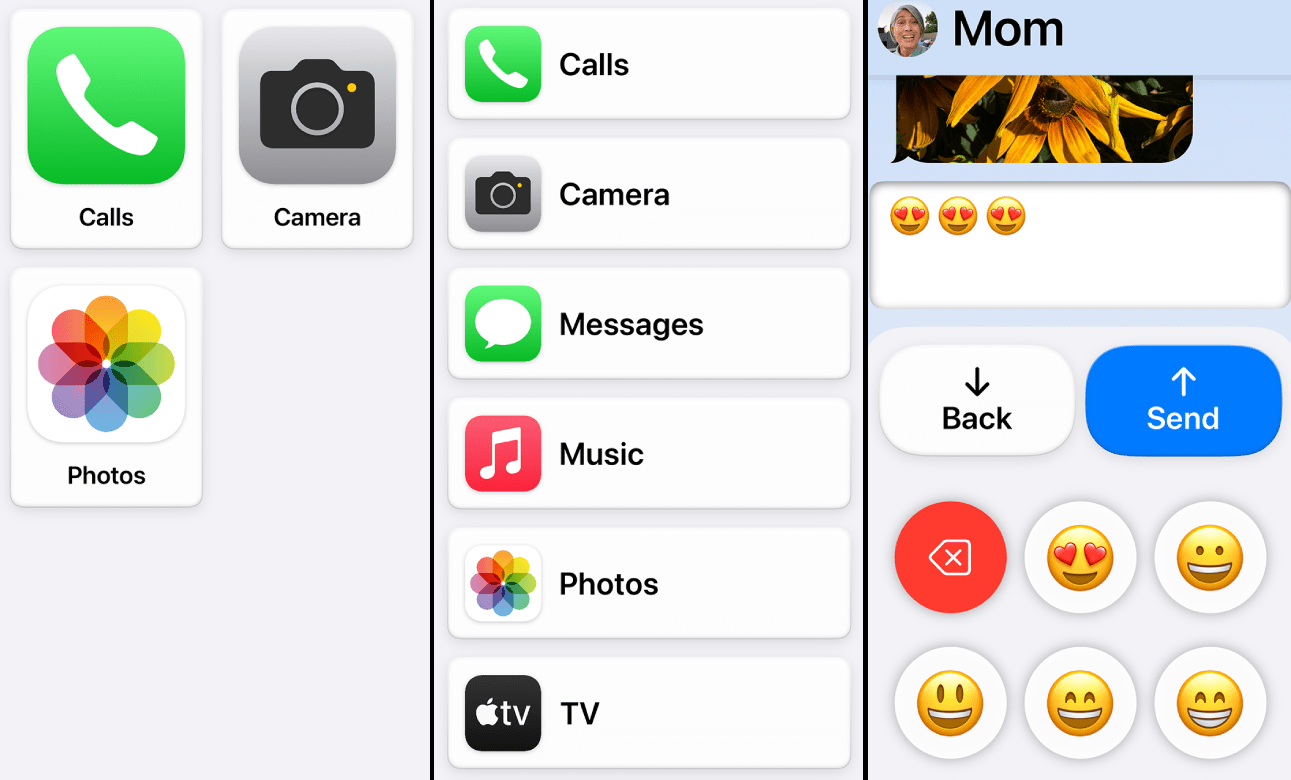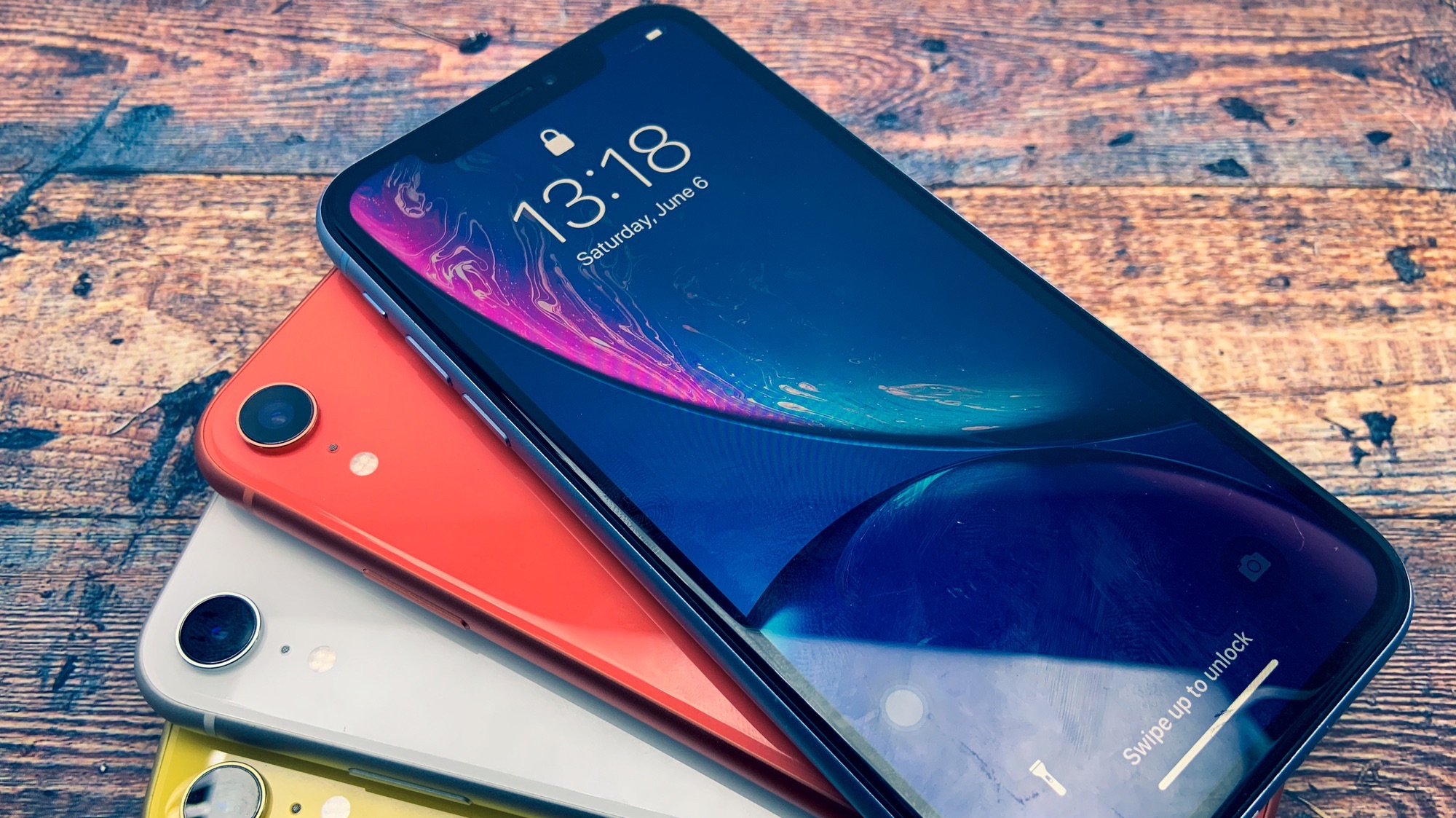

Wish you spent less time mindlessly scrolling on your phone? You’re not alone: a growing number of people wish that. It can be very difficult to wean yourself off your phone, though, in part because most apps are specifically designed to be as addictive as possible. That’s why I’ve tried switching to intentionally simple phones to see if they help me focus. And you know what? It works, in that I scroll less (but I do inevitably end up missing the features of my smartphone).
If you’d like to try out a simpler phone, but don’t want to shell out for a dedicated device, there’s a relatively new iPhone feature called Assistive Access that can turn your current iPhone—or an older iPhone that you have in a junk drawer—into something resembling a simplified dumb phone. That means it can only do the basics: texting, calling, music, and photos, and whatever other applications you specifically choose to enable.
The feature is part of iOS 17, which came out last summer. Supported devices include every iPhone that came out since late 2017, so the Xr/Xs and later. That’s long ago enough that you might have a compatible phone in a drawer somewhere, or know someone who does. This is great if you want to have a simplified phone on hand, or if you want to give a stripped-down smartphone to a child. Let’s go over how to enable the feature.
How to enable Assistive Access on iPhone
To get started, open the System Settings application on the iPhone and head to Accessibility > Assistive Access. If you can’t find this feature verify that you’re running iOS 17—you may need to run an update.
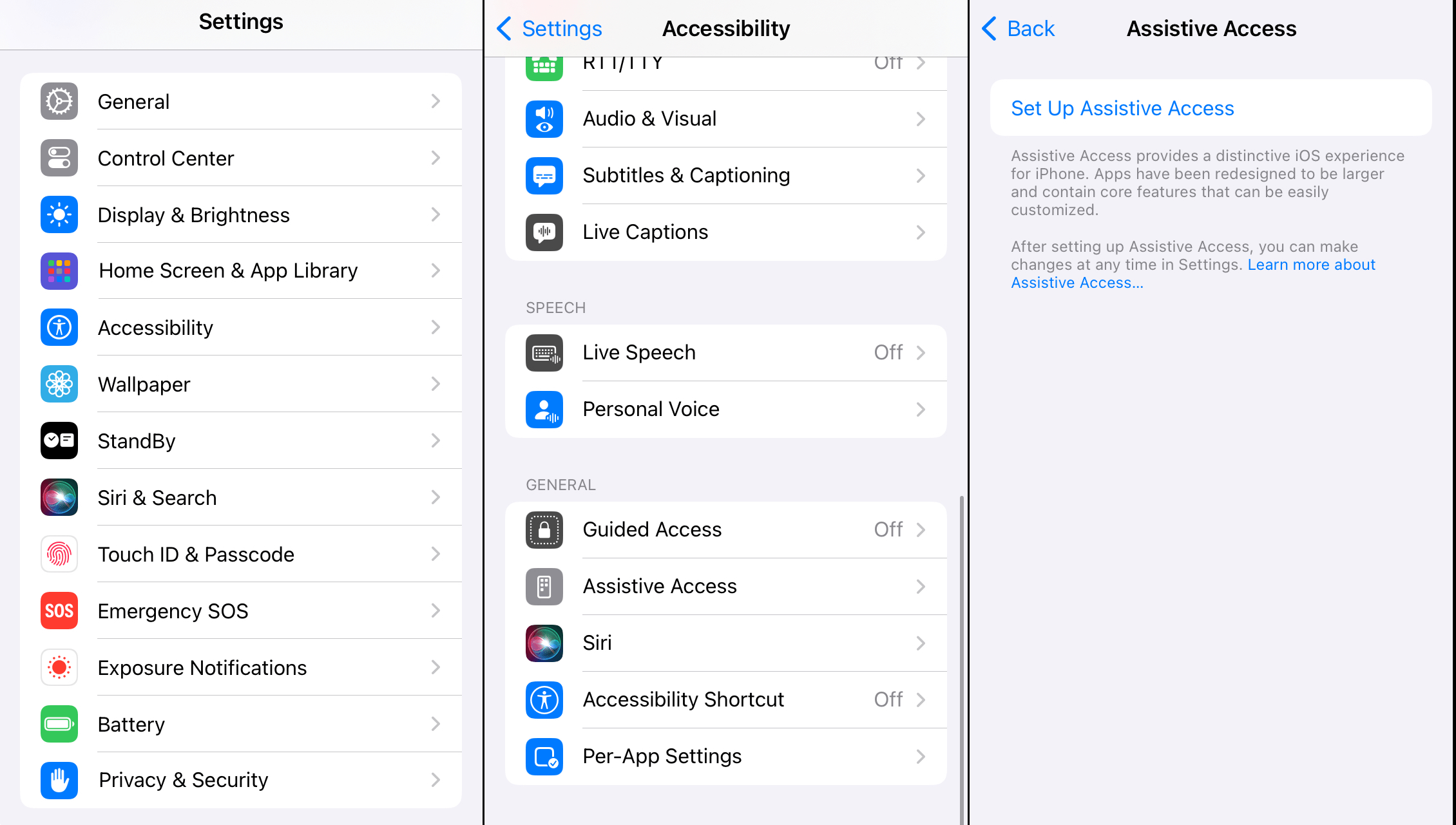
Tap Set Up Assistive Access and you will be asked a series of questions—how you’d like the grid to look, which apps you want to enable, and more. You’ll also be told a little bit about how the feature works. Don’t skip over these slides—they’re helpful.
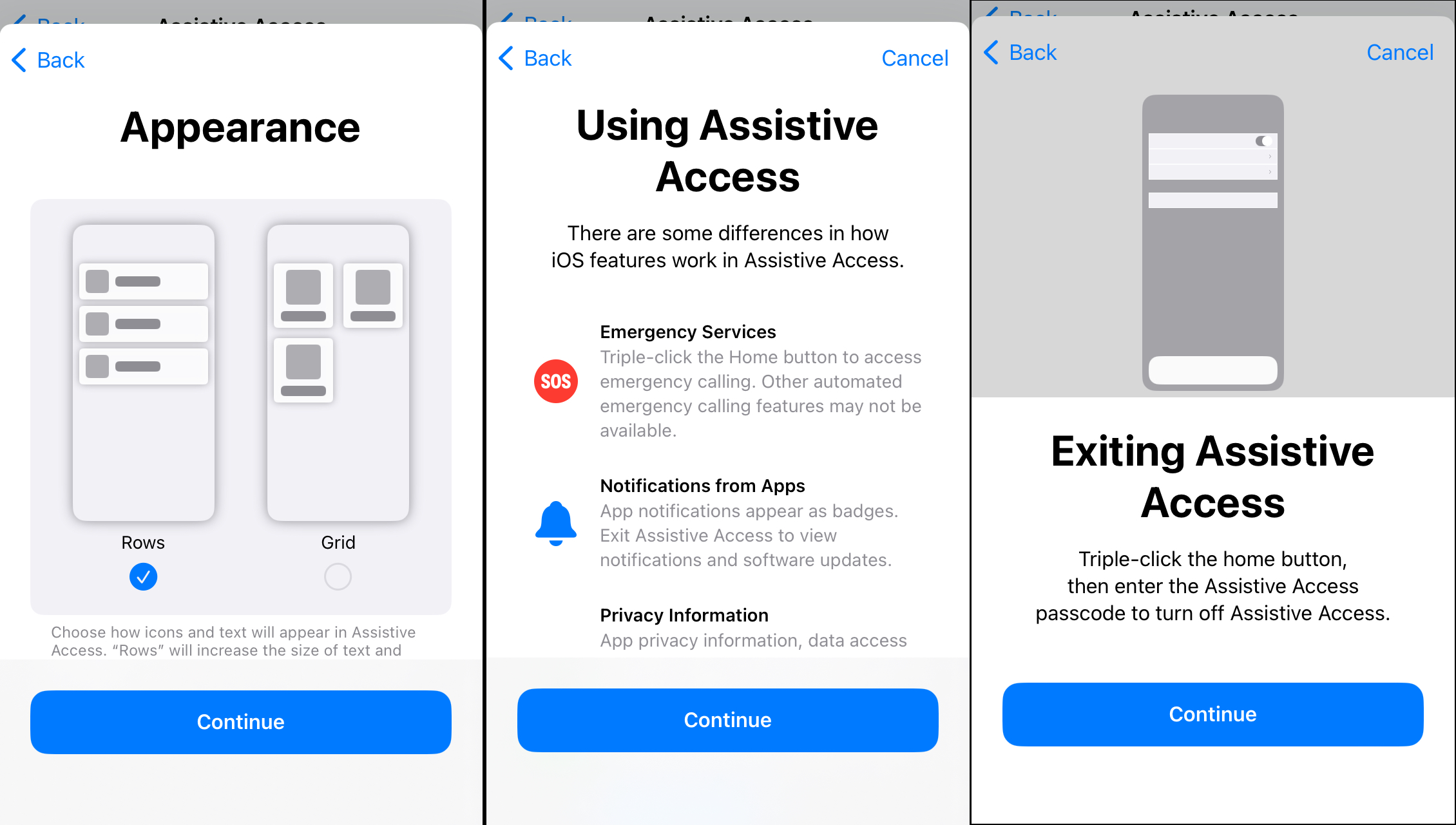
You can also decide which applications you’d like to enable in Assistive Access. There are five applications customized to work well in this mode: Calls, Camera, Messages, Music, and Photos. You can control which features these applications offer—for example, enabling the video camera and selfie mode in the Camera app, or deciding which messages get through in iMessage.
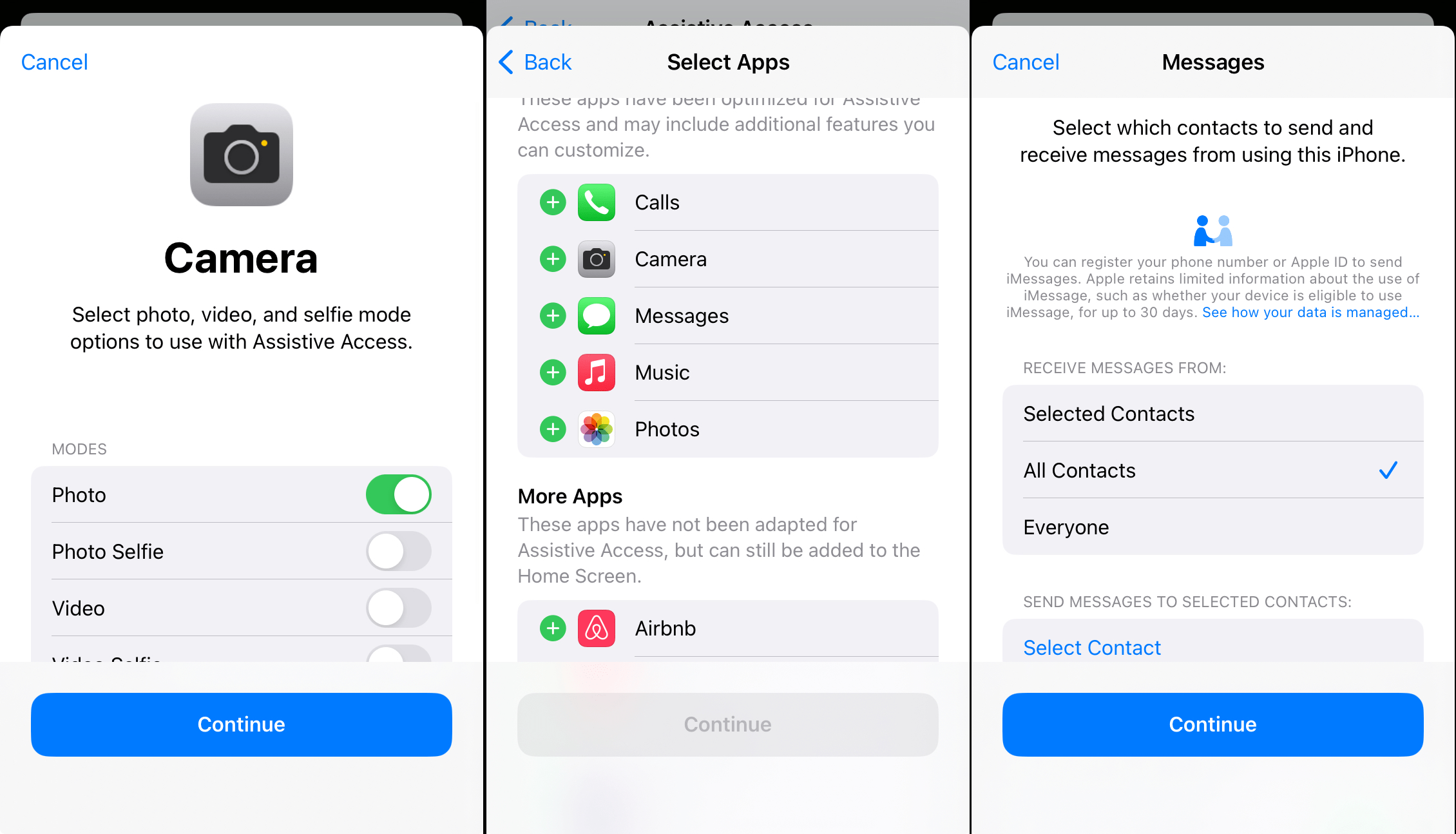
You can also offer unsupported applications, if you want. When everything is configured just the way you want, keep pressing Continue. Eventually you will be asked to add a number key for this mode, which is when anyone trying to spend less time on their phone should stop and give some thought. You are going to need this key in order to switch back to the iPhone’s regular mode. If you know the number key, there is nothing stopping you from switching back to the full iPhone mode. So if the point of this feature for you is to spend less time on your phone, consider finding someone else to set the key for you. (Just make sure they don’t forget the key.)
Once you get through the process you will see a simplified version of your phone’s operating system, with only the applications you’ve allowed. The phone, camera, messages, photos, and music applications will also be a great deal simpler.
